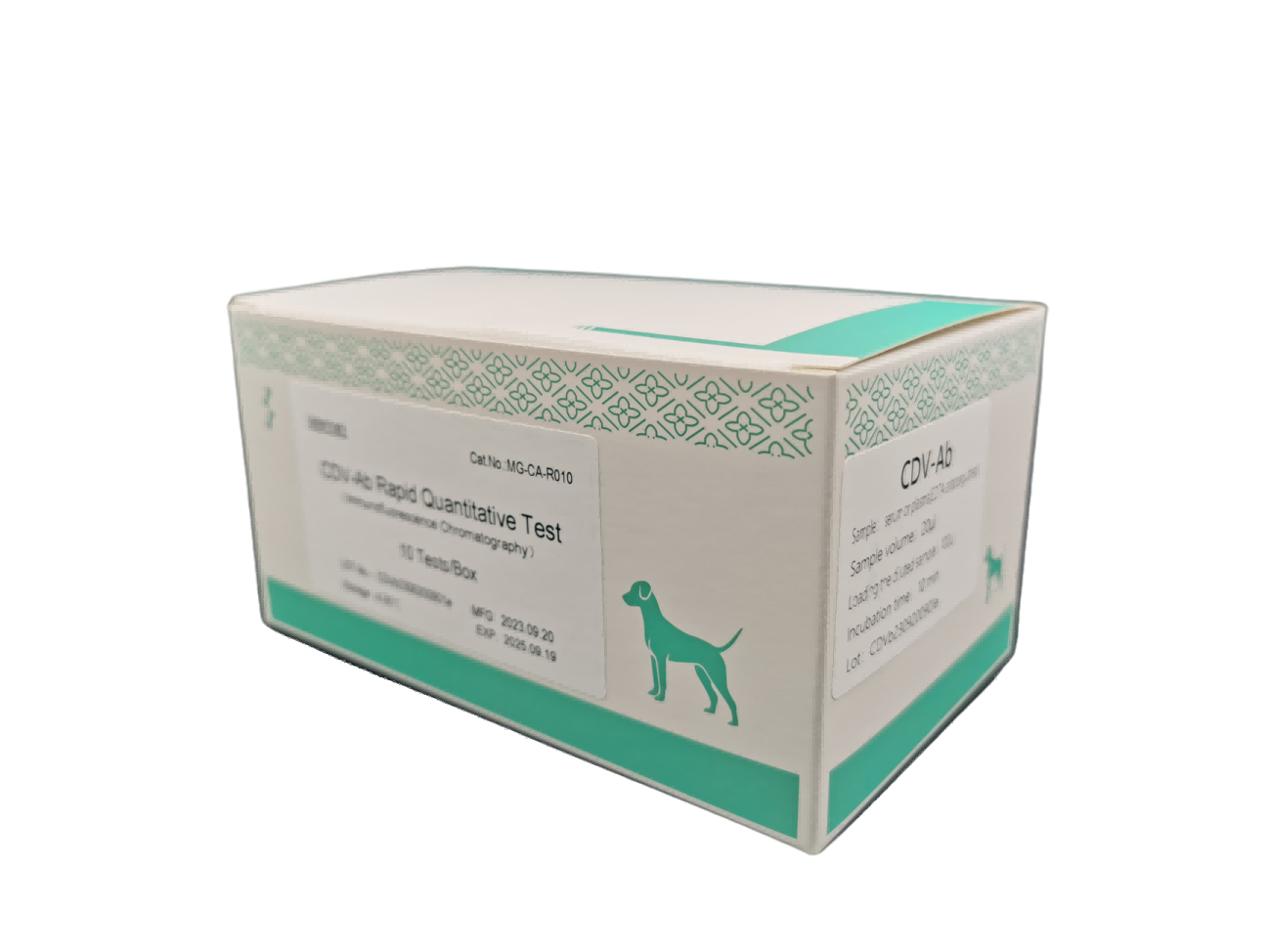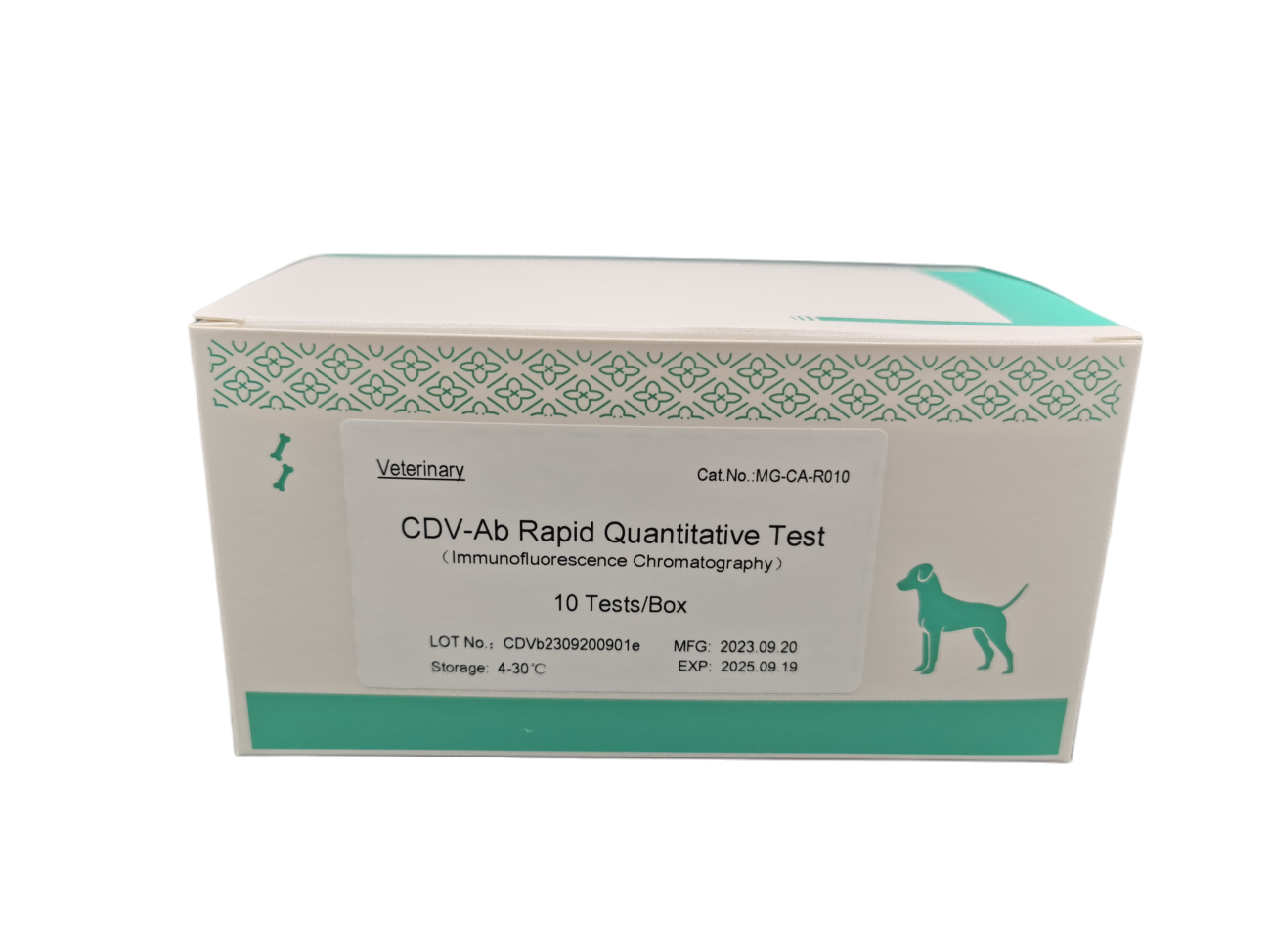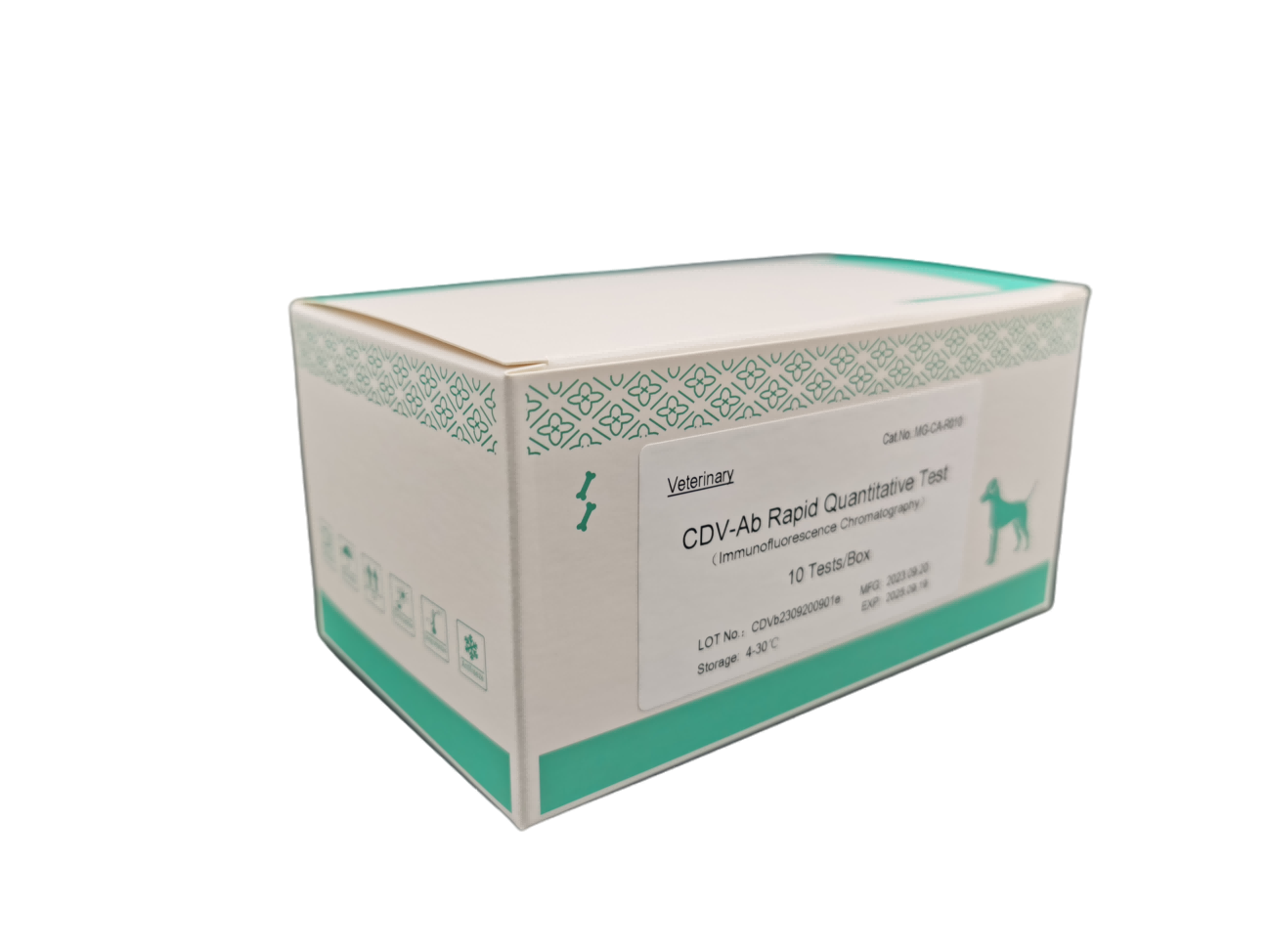



Key attributes

Important Notice: An Immunofluorescence Analyzer is required to run the tests with this kit.
For inquiries about equipment and test kit combos at wholesale prices, please contact us.
SPECIFICATION
10 Tests/Box
Cat. No.: MG-CA-R024
INTENDED USE
The cLSH-Ab test is a fluorescence immunoassay used alongside an Immunofluorescence Analyzer for the quantitative determination of leishmania antibodies in canine serum or plasma. It is intended as an aid in diagnosing and monitoring canine leishmania infection.
For in vitro diagnostic use only. Professional use only.
TEST PRINCIPLE
This test utilizes a quantitative double antigen sandwich fluorescence immunoassay technique. The intensity of the fluorescent signal correlates with the amount of cLSH-Ab captured, with the concentration expressed as Tu/ml.
MATERIALS PROVIDED
Contents:
Individual Sealed Pouches: 10
Test Device: 1 per pouch
Desiccant Pouch: 1 per pouch
ID Chip: 1
Instructions for Use: 1
cLSH-Ab Sample Buffer Tubes: 10
Pipette Tips: 10
MATERIALS REQUIRED BUT NOT PROVIDED
Immunofluorescence Analyzer
Timer
Pipette
Centrifuge
STORAGE AND STABILITY
Store the test kit at 4–30℃ until the expiration date.
Perform the test at 18–28℃ after opening the Test Device.
Use the test within 30 minutes after opening the pouch.
SPECIMEN COLLECTION AND PREPARATION
The test can be performed on serum or plasma. It is recommended to separate serum or plasma (using EDTA anticoagulant) from blood within 3 hours of collection. If the specimen is severely hemolyzed, obtain a new sample for testing. Ideally, perform the test immediately after specimen collection. If testing cannot be done within 3 hours, store the specimen at 2–8℃ for up to 72 hours. For long-term storage, keep specimens below -20℃. Allow all materials to reach room temperature before use. Thaw and mix frozen specimens well before testing. Do not repeatedly freeze and thaw specimens. Only use clear, non-hemolyzed specimens.
TEST PROCEDURE
Refer to the Immunofluorescence Analyzer Operation Manual for detailed instructions on using the Test Device.
Place the Test Device on a clean, level surface.
Insert the ID Chip into the meter and click "Read ID chip." Ensure that the Test Device lot number matches the ID Chip number.
Pipette 50 μl of the prepared sample into the cLSH-Ab Sample Buffer and mix gently. Avoid vigorous agitation and foaming.
Pipette 100 μl of the mixed sample into the sample well (S) of the Test Device, avoiding bubble formation.
Choose the test mode:
Standard Test: Click "Standard Test," insert the Test Device into the meter immediately after adding the sample, and click "Start Test." Select "Serum/Plasma" as the sample type. The meter will automatically start and display the result.
Quick Test: Click "Quick Test," start the timer immediately after adding the sample mixture, and leave the Test Device at room temperature (18–28℃) for 10 minutes. Then, insert the Test Device into the meter and click "Start Test." Select "Serum/Plasma" as the sample type. The meter will automatically scan the Test Device and display the result.
Results will appear on the main screen and can be printed automatically or by clicking "Print."
QUALITY CONTROL
Each cLSH-Ab Rapid Quantitative Test includes an internal control for routine quality checks. This control is performed with every patient sample test. If an invalid result occurs, the meter will display an error message, and a new test should be conducted.
INTERPRETATION
The reference range of cLSH-Ab in canine serum or plasma is as follows:
Detection range: 3.0–320 Tu/ml.
Reference range:
≤ 6 Tu/ml: Negative (-)
6–12 Tu/ml: Suspected (±)
12–25 Tu/ml: Weak Positive (+)
25–100 Tu/ml: Medium Positive (++)
100 Tu/ml: Strong Positive (+++)
Each laboratory should establish a reference range suitable for its population.
WARNINGS AND LIMITATIONS
For in vitro diagnostic use only.
Inspect packaging and labels before use. Do not use if the pouch is damaged or if the vial appears compromised.
Do not use the test device beyond its expiration date.
Use one pipette tip per specimen.
Be aware that technical or procedural errors, as well as certain substances in blood specimens, may interfere with the test and result in erroneous outcomes.
